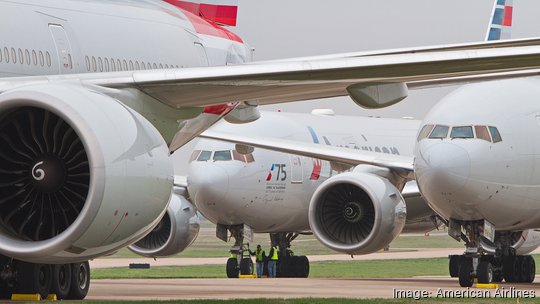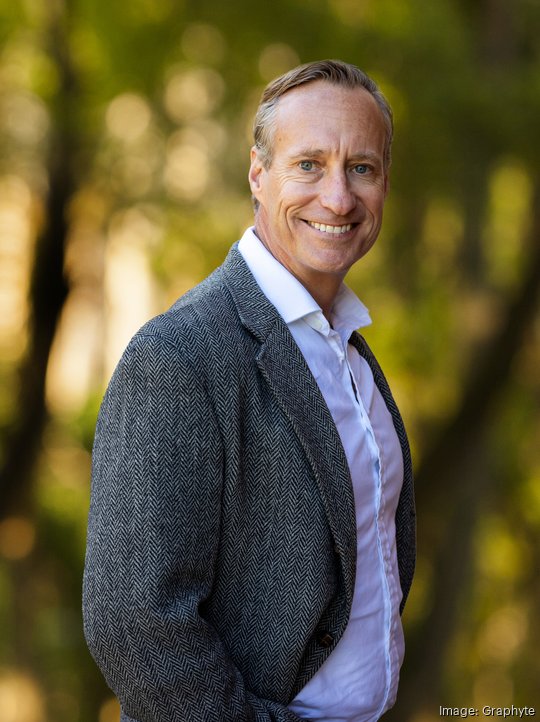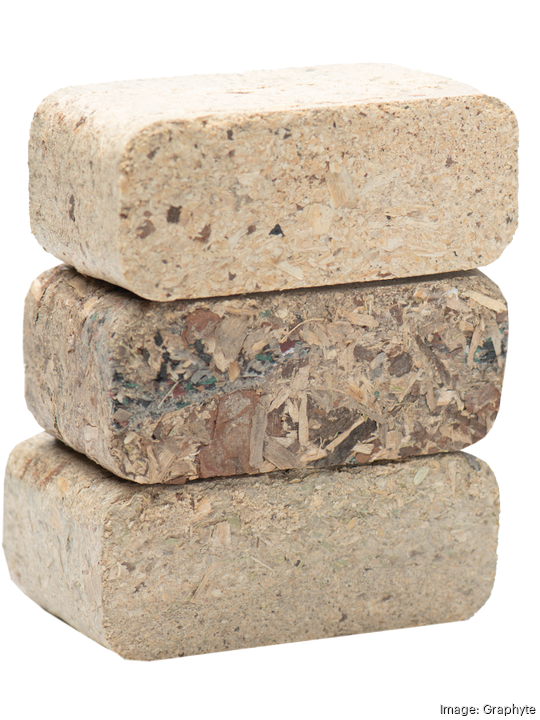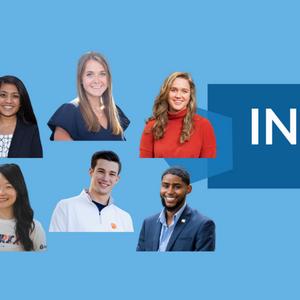
A Memphis, Tennessee-based carbon-removal startup has secured a deal with its first customer — a Fortune 100 company.
Graphyte, a firm that has investors including the Bill Gates-founded Breakthrough Energy Ventures, has agreed to a deal with American Airlines Group Inc. (NASDAQ: AAL) to permanently remove 10,000 tons of carbon by early 2025. American Airlines is by far the dominant carrier at Charlotte Douglas International Airport, with control of some 90% of CLT flights.
“If you think about the broad economic efforts to decarbonize the economy, there are two fundamental things you can do,” Graphyte CEO Barclay Rogers told the Memphis Business Journal. “You can either reduce emissions, which is something that clearly we should continue to focus on, but in addition to that, you can remove carbon dioxide from the atmosphere. We are in the removal category.”
How Graphyte's technology works
The company achieves carbon removal by utilizing already existing biomass and simply dehydrating it to cause it not to release the carbon that it normally does when burnt or during decomposition.
“What causes biomass to decompose are microbes [that] eat it,” Rogers explained. “We dry the biomass down sufficiently, so microbes cannot survive. If they're not able to live, they can't break the biomass down. We press it into blocks, just for material handling reasons, and then we encapsulate those blocks in an environmentally safe, long-lasting, impermeable barrier, so there's no way for the water to get back in. If it stays dry, it doesn't decompose [and] carbon stays locked up in the biomass. Then we store those blocks [at] storage sites, essentially shallow, small holes in the ground and monitor them to make sure that there are no leaks.”
The differentiating factor in Graphyte’s model is its affordability and measurability. Carbon offsets for planting trees and other plants can be tough to measure, and there’s no guarantee for how long those plantings will be there. Carbon capture is a newer technology, meaning that it's hard to scale and expensive to do so.

Graphyte’s business model is set up to be measurable, scalable, and affordable. The company’s carbon removal costs $100 a ton, a number much lower than carbon capture methods.
Rogers told MBJ that he was thrilled it was an airline that signed on as his company’s first customer, from an industry that is harder than most to reduce emissions.
“If you look at the major emitting industries like airlines, it's core to their businesses flying airplanes around,” he said. “If we're just honest about it, there's not many available opportunities today to really reduce emissions from aircraft. Certainly, sustainable aviation fuels are on the horizon. I'm a big fan of that. I think we should be pursuing an all-of-the-above strategy, but in the interim, let's focus on things that we can do.”
Rogers said Graphyte is in a strong position in the coming years for big growth. With companies in all industries targeting ambitious goals regarding carbon neutrality or reduction, Rogers believes there will be plenty of demand nationwide and even potentially in the Memphis market with FedEx.
“If you look at the carbon removal market, many of the early purchasers in high-quality carbon removal have been the major tech companies, [such as] Microsoft, they're helping to open up the market," he said. "When you look at the entities like American Airlines, which are the larger emitters, if you look at CO2 emissions per dollar earned, those are going to be the harder nuts to crack from actually addressing climate greenhouse gas emissions.
"The fact that we were able to align with one of those parties that's serious about its sustainability commitments," he continued, "but it's got a bigger hill to climb than some of the others, I think is strong evidence of the power of this idea of scalable technology that's relatively affordable and permanent.”

Building a Memphis startup
Rogers, a West Memphis native, has been working in the startup space since 2008. This current venture is one he has pushed his investors to base in Memphis from the start. The company has ten employees working remotely, but Rogers and a few others are based within the city.
Rogers said that he plans to keep the company in Memphis long term, but that he also believes in remote work so the company isn’t looking for a physical office just yet. The company has a production facility in Pine Bluff, Arkansas.
Graphyte is looking to expand its headcount. Aside from hiring workers for its facility in Pine Bluff, Rogers said the company seeks to double its headcount to about 20 in the near future. He said if the company continues to land similar deals, the company could be on the fast track to more growth.
Even as the company's prospects expand, Rogers sees Graphyte's future firmly planted in the Bluff City.
He said Memphis made sense from a business perspective due to the city’s proximity to farming and timber industries and because he believes that there are opportunities outside the traditional new venture markets.
“So much of the startup activity happens on the coasts,” Rogers said. “It's in San Francisco, it's in Boston. We need to have those kinds of opportunities more spread around the rest of America. If you come back to our carbon-casting process, you need farms and forests. We need to be close to places where farmers and foresters live and work. They're our suppliers. We're going to be where they are. And that makes it exciting, because it's bringing innovation to the inner parts of America and particularly to Memphis.”



